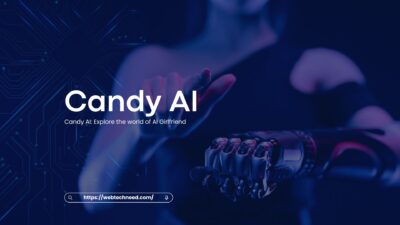Business communication, persuasion, and decision-making have long relied heavily on business presentations. In the past, making a compelling presentation required a significant time and effort commitment. However, developments in automation and artificial intelligence (AI) are changing the face of business presentations, bringing new creativity and efficiency to the process. The impact of automation and artificial intelligence (AI) on business presentations is examined in this article, along with its advantages, disadvantages, and possibilities for future innovation.
The Rise of AI in Business Presentations
AI has quickly permeated many aspects of company operations, including presentations. Presently, artificial intelligence (AI) technologies are being used to improve and automate the creation, design, and delivery of presentations, radically changing the way businesses interact.
One significant development is the emergence of free AI presentation makers. These tools use AI algorithms to automate the creation of presentations, simplifying the process of developing professional-quality slides. Users can input key information, and the AI system generates visually appealing slides complete with relevant content, graphics, and design elements. This not only saves time but also ensures a consistent and polished look.
Benefits of AI and Automation in Presentations
- Efficiency and Time-Saving: Making a presentation an old-fashioned manner can take a lot of time, as it sometimes calls for several design and content revision cycles. AI-powered solutions accelerate this process and enable users to produce polished presentations far more quickly.
- Improved Design Quality: AI systems are capable of identifying design trends and best practices by analyzing enormous volumes of data. This improves the overall quality of presentations by guaranteeing that they are both aesthetically pleasing and compliant with current design standards.
- Data-Driven Insights: AI can be integrated with data analytics platforms to retrieve data in real time, resulting in informative and data-rich presentations. This is especially helpful for reports that need to be precise and current, including performance reviews and business reports.
- Customization and Personalization: AI tools can tailor presentations to specific audiences by analyzing preferences and feedback. This level of customization enhances audience engagement and makes the presentation more relevant and impactful.
Obstacles and Things to Think About
Although automation and artificial intelligence have many advantages, certain issues must be resolved as well:
- Learning Curve: Users who are not familiar with the technology may need to go through a learning curve to adopt new AI capabilities. To guarantee a successful adoption process, organizations must invest in support and training.
- Dependency on Technology: Using artificial intelligence (AI) tools excessively may hinder creativity. To keep presentations fresh and interesting, it’s critical to strike a balance between automation and human creative contribution.
- Data privacy: Access to sensitive company data is frequently necessary for AI tools. Preventing breaches and upholding confidence necessitates ensuring the privacy and security of this data.
The Future Landscape
Though automation and artificial intelligence (AI) in business presentations are still in their infancy, there is a ton of room for innovation in the future. Observe the following trends:
- Voice-Activated Presentations: Using voice instructions, AI-powered voice assistants might be utilized to produce and manage presentations, streamlining the process and freeing up hands.
- Augmented Reality (AR): presentations can take on a new level of immersion and allow users to interact with virtual worlds and 3D models.
- Predictive analytics: During presentations, AI might anticipate audience responses and offer in-the-moment feedback, allowing presenters to modify their strategy for optimum impact.
- Collaborative Platforms: AI-powered platforms known as collaborative platforms allow team members to work together in real-time and seamlessly integrate ideas and inputs from different locations.
Conclusion
The future of business presentations is on the cusp of a revolutionary shift with the integration of AI and automation. The rise of free AI presentation makers and other innovative tools signifies a move towards more efficient, high-quality, and data-driven presentations. While there are challenges to navigate, the benefits far outweigh the drawbacks, promising a future where creating business presentations is not only easier but also more engaging and impactful. As businesses continue to embrace these technologies, staying ahead of the curve will be essential to leverage the full potential of AI and automation in presentations.





